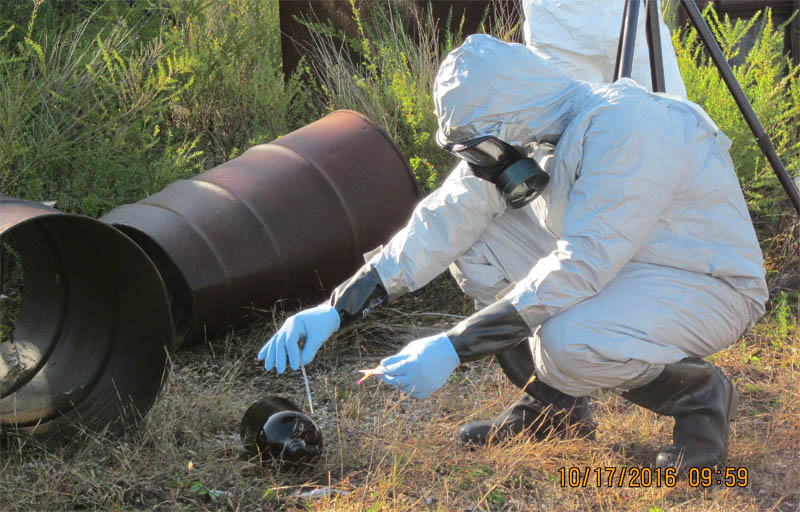
From the U.S. Army Operational Test Command Public Affairs:
The M-Field training area at the Edgewood Chemical and Biological Center (ECBC) here became the fictional city of Schelm from October 10-17.
The makeover supported Operation Schelm Guardian, a joint Navy and Air Force Limited User Test of the Common Analytical Laboratory System (CALS), designed for warfighting units to detect and characterize unknown chemical and biological agents.
An ad hoc group of Sailors and Airmen from across the U.S., ranging from the Navy Environmental and Preventive Medicine Unit (NEPMU) 6 out of Pearl Harbor, Hawaii, to the 779th Aerospace Medical Squadron out of Andrews Air Force Base, Maryland, supported the test.
Combined, the groups made up an Air Force Bioenvironmental Engineer (BE) unit, and a Navy Forward Deployed Preventive Medicine Unit (FDPMU).
According to CALS Test Officer Larry Wollenberg, of the U.S. Army Operational Test Command (USAOTC) at West Fort Hood, Texas, the test’s goal was to access CALS’ capabilities in an operational environment, and to see how current procedures supported those capabilities.
“We need to know if the CALS will aid a commander in his decision making abilities to protect the warfighter in a possible chemical environment,” said Wollenberg.
Despite having never worked together, Lt. Laura Moody with the Navy Environmental and Preventive Medicine Unit (NEPMU) 5 from San Diego, California, said having a group of Sailors and Airmen of differing backgrounds and experiences turned out to be one of the tests greatest strengths.
”e were able to seamlessly integrate and work together in the operational environment,” said Moody. “The joint mission was a unique aspect of this test, and it was a very valuable learning experience to see up close the way the Air Force teams operate.”
Moody went on to say how the test was vital in capturing the unique mission sets both Navy and Air Force teams face.
“Pretty amazing how we integrated our mission sets and communicated both operational and technical information between services,” she said. “The testing environment was realistic and relevant and we were able to use the equipment provided to help identify unknown chemical threats.”
An Air Force participant from Cincinnati, Ohio, said the test took Airmen from three different installations, and put them together as a team using a common equipment set and common tactical procedures.
“This built confidence among the warfighters — something that will pay great dividends in joint environments,” said Maj. Robert Schmidtgoessling of the 509th Bomb Wing out of Whiteman Air Force Base, Missouri.
USAOTC got together with the Navy and Air Force to come up with tough, real-world type missions, created to mimic hazards a chemical unit might face on the battlefield.
The results of their work quickly became evident, said Mark Jackson, one of the planners from the Navy’s Commander Operational Test and Evaluation Force (COMOPTEVFOR).
As the Army’s only independent operational tester, USAOTC tests and assesses Army, joint, and multi-service war fighting systems in realistic operational environments, using typical service members to determine whether the systems are effective, suitable, and survivable. USAOTC is required by public law to test major systems before they are fielded to its ultimate customer — the American service member.



Leave a Reply
You must be logged in to post a comment.